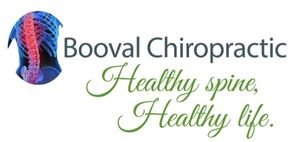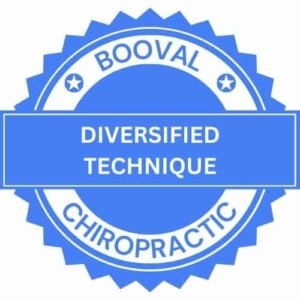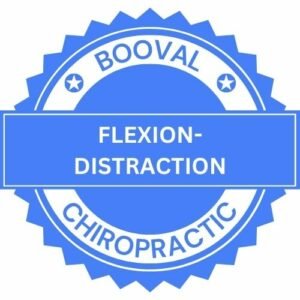• Chiropractic Care •
Chiropractic BioPhysics
Chiropractic Biophysics (CBP) is a technique used in chiropractic care that focuses on correcting spinal alignment and posture through various techniques such as spinal traction, spinal adjustments, and exercises. CBP aims to reduce pain, improve function and promote optimal health. CBP strives to achieve optimal spinal alignment by creating an ideal balance of spinal curves and restoring the spine’s natural curvatures.
CBP GOALS FOR CARE
The goals of Chiropractic Biophysics (CBP) are to:
• Correct spinal alignment: CBP aims to restore the spine’s natural curvatures and achieve optimal spinal alignment.
• Reduce pain: By correcting spinal alignment, CBP can help reduce pain in the back, neck, and other body parts.
• Improve posture: CBP improves posture by correcting the balance and alignment of the spine and promoting proper posture habits.
• Enhance function: CBP aims to enhance overall function by improving the spine’s structural integrity and reducing pain and discomfort.
• Promote optimal health: CBP promotes overall health and wellness by correcting spinal alignment and reducing pain.
The CBP technique uses various techniques, including spinal traction, chiropractic adjustments, and exercises, to achieve these goals.
IDEAL POSTURE ALIGNMENT
In Chiropractic Biophysics (CBP), ideal posture alignment refers to a state where the spine is in its natural, balanced and structurally correct position. This is achieved when the spine has the proper balance of spinal curves, and the vertebrae are aligned to reduce stress and strain on the joints, discs, and nerves.
CBP considers ideal posture alignment the key to optimal spinal health and function and aims to correct misalignments that may contribute to pain, discomfort, and reduced mobility. Ideal posture alignment in CBP is achieved through a combination of chiropractic adjustments, spinal traction, and exercise therapy.
IDEAL SPINAL ALIGNMENT
In Chiropractic Biophysics (CBP), ideal spinal alignment refers to a state where the spine is in its natural and balanced position, with the correct balance of spinal curves. This ideal alignment reduces stress and strain on the joints, discs, and nerves and ensures proper function and stability of the spine.
CBP considers ideal spinal alignment crucial for optimal spinal health and aims to correct misalignments or imbalances that may contribute to pain, discomfort, and reduced mobility. Ideal spinal alignment in CBP is achieved through a combination of chiropractic adjustments, spinal traction, and exercise therapy. The ultimate goal is to help individuals achieve and maintain a healthy and properly aligned spine for optimal health and function.
HARRISON FULL SPINE MODEL
The Harrison Full Spine Model is a technique used in Chiropractic Biophysics (CBP) to analyse and correct spinal misalignments. It is a comprehensive diagnostic and treatment approach that considers the entire spine, from the neck to the pelvis, to achieve ideal spinal alignment and posture.
The Harrison Full Spine Model uses various tools, including X-rays, posture analysis, and spinal measurements, to identify areas of misalignment and imbalances in the spine. This information is then used to develop a customised treatment plan that may include chiropractic adjustments, spinal traction, and exercise therapy to correct the misalignments and restore ideal spinal alignment and posture.
The Harrison Full Spine Model is designed to address spinal problems comprehensively and holistically, taking into account the interconnectedness of the various parts of the spine and how they impact overall spinal function and health.
X-RAY ANALYSIS AND UTILISATION
X-ray analysis and utilisation are essential in Chiropractic Biophysics (CBP). X-rays create spine images that can reveal misalignments, imbalances, and other spinal problems contributing to pain, discomfort, and reduced mobility.
In CBP, X-ray analysis is used to:
Assess spinal alignment: X-rays can provide detailed images of the spine that help chiropractors determine the degree and location of spinal misalignments and imbalances.
Monitor progress: X-rays can be used to track changes in spinal alignment over time and monitor the effectiveness of chiropractic treatment.
Develop treatment plans: Based on the results of X-ray analysis, chiropractors can develop personalised treatment plans that may include chiropractic adjustments, spinal traction, and exercise therapy to correct misalignments and restore ideal spinal alignment and posture.
CBP uses X-rays and other diagnostic tools and techniques to comprehensively understand spinal problems and develop effective treatment plans to correct them. X-ray analysis and utilisation are essential components of CBP’s goal to promote optimal spinal health and function.
At Booval Chiropractic X-rays are only used when clinically indicated.
CBP® POSTURAL ANALYSIS
CBP Postural Analysis is a diagnostic tool used in Chiropractic Biophysics (CBP) to assess spinal alignment and posture. This analysis uses visual and quantitative methods to evaluate the position and balance of the spine and identify areas of misalignment or imbalances that may be contributing to pain, discomfort, and reduced mobility.
The goal of CBP Postural Analysis is to provide a comprehensive understanding of an individual’s spinal problems and the underlying causes of their symptoms. This information is then used to develop a personalised treatment plan that may include chiropractic adjustments, spinal traction, and exercise therapy to correct misalignments and restore ideal spinal alignment and posture.
CBP Postural Analysis typically involves using photographs, measurements, and posture-assessment tools to evaluate the position of the head, neck, shoulders, spine, and pelvis. This analysis provides essential information that can be used to develop a customised treatment plan to help individuals achieve and maintain optimal spinal health and function.
MIRROR IMAGE® POSTURAL ADJUSTMENTS
Mirror Image Postural Adjustments are a technique used in Chiropractic Biophysics (CBP) to correct spinal misalignments and restore ideal spinal alignment and posture. Mirror Image Postural Adjustments aims to create symmetry and balance in the spine by making chiropractic adjustments that correct any imbalances or asymmetries between the right and left sides of the body.
Mirror Image Postural Adjustments are based on the principle that the body has a natural tendency to strive for symmetry and balance. In CBP, this is achieved by making adjustments to the spine that restore proper alignment and balance between the right and left sides of the body. This can help to relieve pain, reduce stress and strain on the joints, discs, and nerves, and improve overall spinal function and health.
CBP practitioners use a combination of chiropractic adjustments, spinal traction, and exercise therapy to correct spinal misalignments and restore ideal spinal alignment and posture. Mirror Image Postural Adjustments are a critical component of CBP’s comprehensive approach to promoting optimal spinal health and function.
MIRROR IMAGE® POSTURAL EXERCISES
Mirror Image Postural Exercises are a type of exercise therapy used in Chiropractic Biophysics (CBP) to improve spinal alignment and posture. These exercises are designed to address any imbalances or asymmetries between the right and left sides of the body and help to restore symmetry and balance to the spine.
Mirror Image Postural Exercises are based on the principle that the body has a natural tendency to strive for symmetry and balance. In CBP, these exercises help individuals achieve and maintain optimal spinal health and function by correcting any imbalances or asymmetries between the right and left sides of the body.
CBP practitioners typically prescribe a customised exercise program to their patients that include Mirror Image Postural Exercises and other exercises and stretches to help correct spinal misalignments and improve posture. These exercises can be performed at home or in a clinical setting. They may be combined with other forms of therapy, such as chiropractic adjustments and spinal traction, to help achieve the best possible results.
Mirror Image Postural Exercises help individuals achieve and maintain ideal spinal alignment and posture, relieve pain and discomfort, reduce stress and strain on the joints, discs, and nerves, and improve overall spinal function and health.
MIRROR IMAGE® POSTURAL AND SPINAL TRACTION
Mirror Image Postural and Spinal Traction are techniques used in Chiropractic Biophysics (CBP) to correct spinal misalignments and restore ideal spinal alignment and posture. These techniques aim to create symmetry and balance in the spine by addressing any imbalances or asymmetries between the right and left sides of the body.
Mirror Image Postural and Spinal Traction are based on the principle that the body has a natural tendency to strive for symmetry and balance. In CBP, these techniques help individuals achieve and maintain optimal spinal health and function by correcting any imbalances or asymmetries between the right and left sides of the body.
Mirror Image Postural and Spinal Traction typically involve a combination of chiropractic adjustments and spinal traction to correct misalignments and restore ideal spinal alignment and posture. CBP practitioners use specialised equipment and techniques to apply traction to the spine in a controlled and specific manner. They may also use additional forms of therapy, such as exercise therapy and chiropractic adjustments, to achieve the best possible results.
Mirror Image Postural and Spinal Traction aim to help individuals achieve and maintain ideal spinal alignment and posture, relieve pain and discomfort, reduce stress and strain on the joints, discs, and nerves, and improve overall spinal function and health.
TREATMENT INTERVENTIONS
Treatment Interventions in the Chiropractic Biophysics (CBP) protocol of care typically include a combination of the following:
- Chiropractic adjustments: CBP practitioners use specific, targeted adjustments to correct spinal misalignments and restore ideal spinal alignment and posture.
- Spinal traction: CBP practitioners use specialised equipment and techniques to apply controlled traction to the spine, which helps to decompress the spinal discs and improve spinal alignment.
- Exercise therapy: CBP practitioners prescribe customised exercise programs to their patients, including Mirror Image Postural Exercises and other therapy forms to help improve spinal alignment and posture.
- Postural analysis and re-training: CBP practitioners use X-ray and posture analysis techniques to identify and correct any imbalances or asymmetries in the spine and provide patient education on proper posture and body mechanics.
- Soft tissue therapy: CBP practitioners may also use soft tissue therapy, such as massage and other manual therapy, to help relieve pain, reduce muscle tension, and improve overall spinal function and health.
- Nutritional counselling: CBP practitioners may also provide nutritional counselling to help support overall health and wellness and to address any specific health concerns related to the spine and nervous system.
The CBP protocol of care aims to help individuals achieve and maintain ideal spinal alignment and posture, relieve pain and discomfort, reduce stress and strain on the joints, discs, and nerves, and improve overall spinal function and health. Treatment interventions are customised for each individual based on their specific needs and conditions and may change over time as their condition improves or changes.
FREQUENCY & DURATION OF CBP TECHNIQUE CARE
The frequency and duration of Chiropractic Biophysics (CBP) technique care depends on various factors, including the individual’s specific condition, health goals, and response to treatment.
CBP practitioners recommend starting with a series of regular visits, usually once or twice a week, for several weeks to several months. During this time, the practitioner will monitor the patient’s progress and make any necessary adjustments to the treatment plan.
Once the patient has achieved their desired level of improvement, the frequency of visits may be reduced to maintenance visits, which may be scheduled monthly, bi-monthly, or quarterly, depending on the individual’s needs and goals.
The duration of CBP technique care also depends on the individual’s specific condition and goals. For some individuals, short-term care may be sufficient to achieve their desired level of improvement, while others may need longer-term care to manage their condition and maintain their results.
It is important to note that the frequency and duration of CBP technique care are individualised and tailored to meet each patient’s specific needs and goals. They may be adjusted over time based on the patient’s progress and response to treatment.
CONCLUSION
In conclusion, Chiropractic Biophysics (CBP) is a chiropractic technique that focuses on achieving and maintaining ideal spinal alignment and posture, reducing stress and strain on the joints, discs, and nerves, and improving overall spinal function and health. CBP is based on the principles of biomechanics, physiology, and anatomy. It utilises various tools and techniques to achieve its goals, including X-ray analysis, posture analysis, chiropractic adjustments, spinal traction, exercise therapy, soft tissue therapy, and nutritional counselling.
Treatment interventions are individualised and tailored to meet each patient’s specific needs and goals and may include a combination of the abovementioned techniques. The frequency and duration of CBP technique care also depend on the individual’s specific condition, health goals, and response to treatment. They may be adjusted over time based on the patient’s progress.
Overall, CBP is a comprehensive and evidence-based approach to chiropractic care that has helped many individuals achieve and maintain ideal spinal alignment and posture, relieve pain and discomfort, and improve overall spinal function and health.
Diversified Technique
Diversified technique is one of the many different Chiropractic approaches in which we are trained and competent. Our goal is to match the appropriate approach to the patient to serve your needs best. Arguably the most common and well-known Chiropractic adjusting technique is “Diversified”. It is taught in most, if not all, Chiropractic universities and colleges worldwide.
First, a comprehensive health and complaint history is taken, along with a physical examination, including a spine analysis. In some circumstances, we may require X-ray images of your spine (should your case history indicate them clinically). If this is the case, you will be referred to a local imaging clinic which does not require an appointment and usually bulk bills. Subsequent visits may include Motion Palpation, with the Chiropractor feeling the spinal joints move as you turn and bend. The direction, speed, depth and angle employed are driven by years of experience, practice and a thorough understanding of spinal mechanics. The Diversified technique is very safe (though all treatments can carry risks), and the type of adjustment employed will be modified to suit the patient.
The energy delivered during the thrust may produce a slight “popping” sound from the shifting of gas and fluids in the joint, which may “sound” exciting but is not a guide as to the value or effectiveness of the adjustment. As previously mentioned, the Diversified technique is modified to suit patients and their preferences. Adjusting a young labourer with mechanical pain will look very different from a small child with mechanical pain or an older person with much arthritis and weakened bone strength.
While improving spinal biomechanics can help at a spinal level, virtually all body joints can be adjusted to help restore proper range of motion.
Flexion-Distraction
Flexion-Distraction is a Chiropractic technique that uses a designed treatment table that can have the bottom half lower independently and flex, distract, and/or rotate, all in a prolonged and controlled manner. Flexion-Distraction allows the Chiropractor to decompress and bend the spine gently and can often be helpful for lower back pain, sciatica and spinal stiffness. More often than not, patients find this process very pleasant as it is applied. We find it powerfully effective.
Flexion-Distraction, or Cox® Technic, was developed in the early 1960s by Dr James M. Cox, DC, DACBR. In developing the technique, Dr Cox combined chiropractic principles with the osteopathic principles set forth by Alan Stoddard, DO, in his book Manual of Osteopathic Technique, which chronicles the manipulative procedures developed by John McManis, DO, in the early 1900s.
Initially, Dr Cox introduced and taught the technique as “Flexion-Distraction”, now the common name. Over the decades, Cox® Technic has evolved thanks to the efforts of many researchers and fellow Chiropractors.
Booval Chiropractic has two flexion-distraction tables, and Ipswich Chiropractor Dr Scott Charlton is formally trained and very competent in the technique. Indeed, he uses it as a regular part of his Chiropractic practice. If you want to know whether Flexion-Distraction can help you, whether for back pain, sciatica or leg pain or spine stiffness or pins and needles or numbness in the legs, call us today for an evaluation.
Your experience at Booval Chiropractic will begin with a thorough case history and physical examination. Should x-rays be clinically indicated, you will be referred locally to an imaging centre that does not require an appointment and usually bulk bills. The Chiropractor will then provide a diagnosis as appropriate and treatment options (which may include options other than Flexion-Distraction or other than Chiropractic). Your progress will be closely monitored, and advice will be provided on what you can do at home to give the best results fastest from your treatment.
Trigger Point Therapy
Trigger Point Therapy primarily aims to reduce the pain resulting from hypersensitive muscles. Identifying trigger points is done by gently pressing on the skin’s surface, feeling the texture of the underlying muscle. By applying constant pressure with the thumbs, elbow or hand instrument, muscles relax, and pain is often reduced.
A trigger point is like a knot that feels like a pea buried deep in the muscle. It is caused by lactic acid, a normal by-product of muscle activity, which sometimes gets trapped in the muscle from physical, chemical or emotional stress. It is often tender and painful. As affected muscles tighten, their function and motion are restricted, causing weakness and pain. In extreme cases, muscle cramping can result.
Trigger Point Therapy is performed in several ways. The least invasive is applying direct pressure or stretching of the affected muscle. Deliberate pressure with a thumb, elbow or instrument releases the muscle and helps it relax and eases pain and stiffness in the area. Sometimes there are a series of strokes across the trigger point nodules, or a cooling spray is applied to stretch the affected muscle. Trigger Point Therapy is a natural way to relax muscles and restore strength and flexibility.
Call us today to see whether Trigger Point therapy is appropriate. We will sit down and take a comprehensive case history and physical examination with you. Once the likely causes of your complaints are identified and explained, we will explore options for treatment. These may include Trigger Point therapy or other Chiropractic or non-Chiropractic approaches appropriate to your case.




